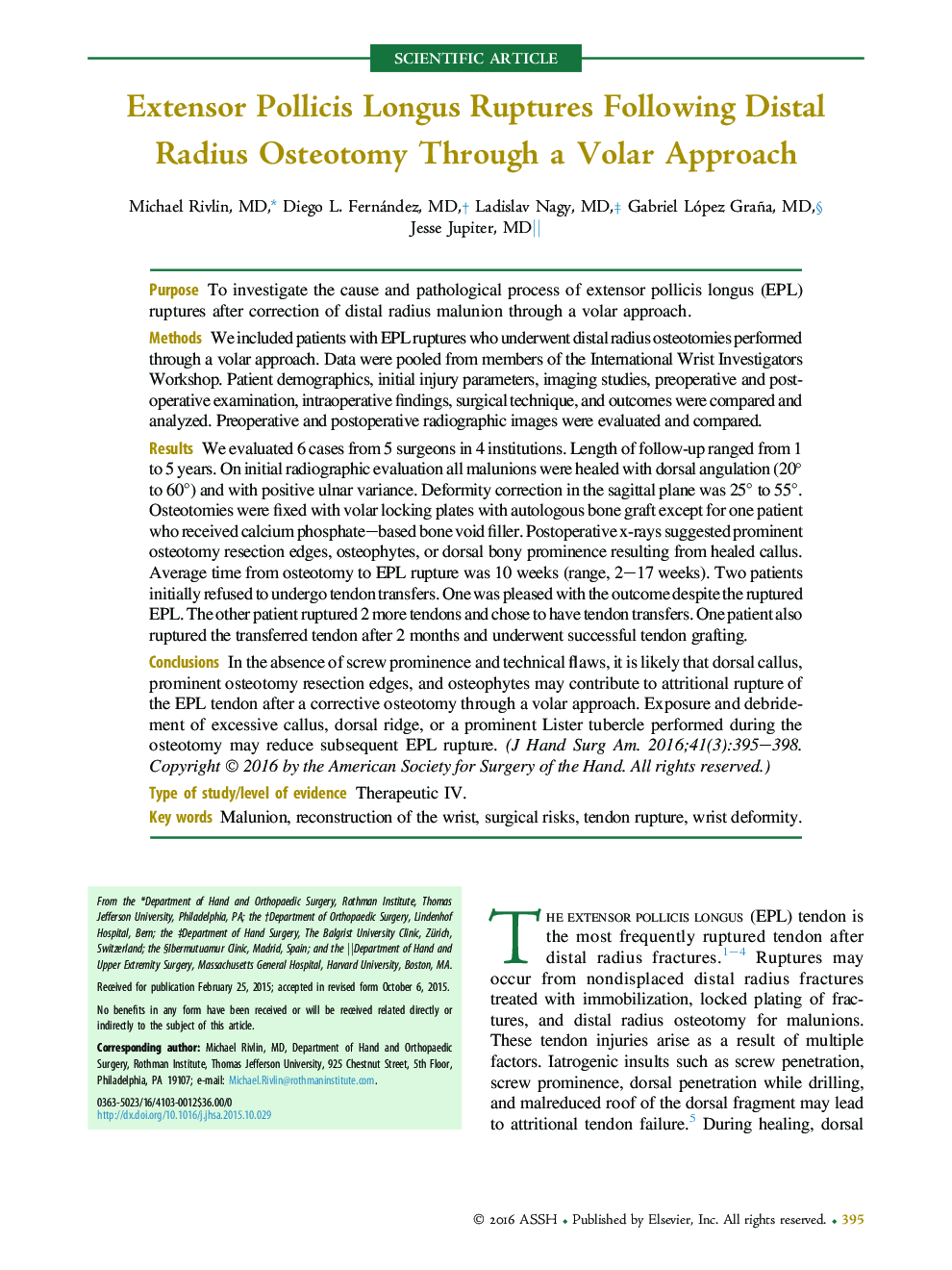| کد مقاله | کد نشریه | سال انتشار | مقاله انگلیسی | نسخه تمام متن |
|---|---|---|---|---|
| 4066142 | 1604346 | 2016 | 4 صفحه PDF | دانلود رایگان |

PurposeTo investigate the cause and pathological process of extensor pollicis longus (EPL) ruptures after correction of distal radius malunion through a volar approach.MethodsWe included patients with EPL ruptures who underwent distal radius osteotomies performed through a volar approach. Data were pooled from members of the International Wrist Investigators Workshop. Patient demographics, initial injury parameters, imaging studies, preoperative and postoperative examination, intraoperative findings, surgical technique, and outcomes were compared and analyzed. Preoperative and postoperative radiographic images were evaluated and compared.ResultsWe evaluated 6 cases from 5 surgeons in 4 institutions. Length of follow-up ranged from 1 to 5 years. On initial radiographic evaluation all malunions were healed with dorsal angulation (20° to 60°) and with positive ulnar variance. Deformity correction in the sagittal plane was 25° to 55°. Osteotomies were fixed with volar locking plates with autologous bone graft except for one patient who received calcium phosphate–based bone void filler. Postoperative x-rays suggested prominent osteotomy resection edges, osteophytes, or dorsal bony prominence resulting from healed callus. Average time from osteotomy to EPL rupture was 10 weeks (range, 2–17 weeks). Two patients initially refused to undergo tendon transfers. One was pleased with the outcome despite the ruptured EPL. The other patient ruptured 2 more tendons and chose to have tendon transfers. One patient also ruptured the transferred tendon after 2 months and underwent successful tendon grafting.ConclusionsIn the absence of screw prominence and technical flaws, it is likely that dorsal callus, prominent osteotomy resection edges, and osteophytes may contribute to attritional rupture of the EPL tendon after a corrective osteotomy through a volar approach. Exposure and debridement of excessive callus, dorsal ridge, or a prominent Lister tubercle performed during the osteotomy may reduce subsequent EPL rupture.Type of study/level of evidenceTherapeutic IV.
Journal: The Journal of Hand Surgery - Volume 41, Issue 3, March 2016, Pages 395–398